Visa Traveler
Exploring the world one country at a time

48 VISA-FREE Countries for US Green Card Holders [2024 Edition]
Updated: February 3, 2024 8 Comments
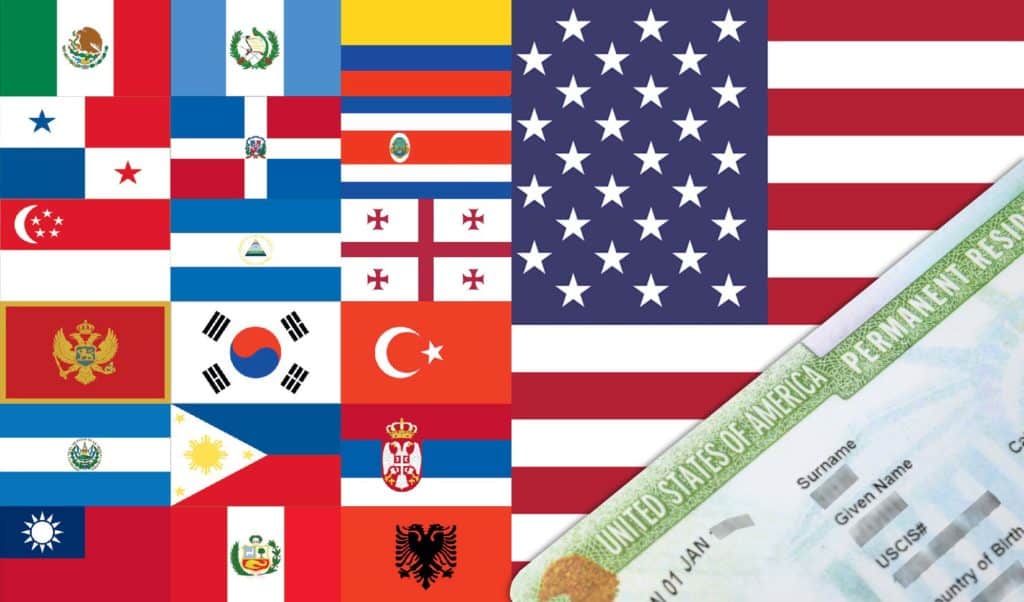
A US green card not only lets you reside in the US but also offers you visa-free access to many countries and territories. As of 2024, there are about 48 visa-free countries for US green card holders.
A US green card is a pathway to a US passport. While you wait for your US passport, your US green card is already making your current passport strong . Not as strong as a US passport but quite strong. You already have visa-free access to 48 additional countries.
Table of Contents
IMPORTANT DISCLAIMER Visa requirements change constantly but we make every effort to keep the information accurate and up to date. We provide links to official sources wherever necessary, so you can conduct your own due diligence to verify the visa requirements before planning your trip. We shall not be held liable for any damages incurred as a result of using the information in this article. Refer to our full disclaimer for more information.
Why are there VISA-FREE countries for US green card holders?
US passport (and US citizenship) is considered one of the strongest in the world. A US green card is a pathway to US citizenship. Many countries believe that someone with a US green card will not jeopardize their chances of becoming a US citizen by remaining illegally in another country.
Working towards acquiring a US green card requires remaining several years in the US or investing enormous amounts of cash or building very strong family ties with the US. It’s silly for someone to let go of years of valuable time and millions of dollars of investments just to stay illegally in another country. Therefore, countries trust US green card holders as genuine travelers and treat them almost like someone with a strong passport. So, these countries offer visa-free access to US green card holders.
How many countries can you visit with a US green card?
As of 2024, there are 48 countries and territories that you can visit with a US green card. This list of countries for US green card holders includes visa-free, visa on arrival and e-visa countries. Japan is the new addition to the list with the option to apply for e-visa without needing to go to the embassy.
Let’s look at what these countries are in detail.
Where can green card holders travel without a visa?
As of 2024, these are the 48 countries where green card holders can travel without a visa.
- Anguilla (British Territory)
- Antigua and Barbuda
- Bermuda (British Territory)
- Bonaire (Dutch Territory)
- Bosnia and Herzegovina
- British Virgin Islands (British Territory)
- Cayman Islands (British Territory)
- Dominican Republic
- El Salvador
- Philippines
- Saudi Arabia
- Sint Maarten
- South Korea
- Turks and Caicos (British Territory)
- United Arab Emirates
- United Kingdom
- US territories
Let’s look into the entry requirements of each of these countries in detail.
RELATED: 53 countries you can visit VISA-FREE with US visa in 2024
North America
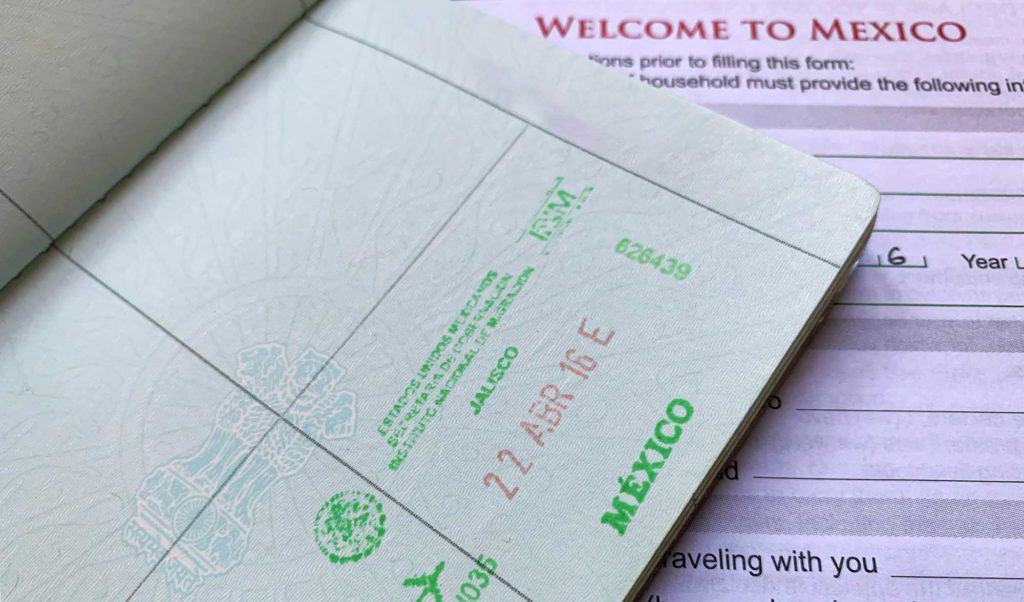
- Eligible nationalities: All nationalities
- Entry granted: 180 days
- Entry rule: Entry into Canada is only allowed if you present a valid passport from the country of nationality along with a green card.
- Official source: Government of Canada Immigration and Citizenship
Read more about traveling to Canada with US green card . This article will guide you through the requirements and border procedure when entering Canada with your US green card.
- Entry granted: Varies depending on the itinerary
- Entry rule: Green card must be valid for the entire stay in Mexico
- Official source: National Institute of Migration, Mexico
Read more about traveling to Mexico with a US green card . This article will help you understand the requirements and entry procedures at the airport when traveling to Mexico with your US green card.
03. United States Territories
- Includes the US territories: US Virgin Islands, Puerto Rico, Northern Mariana Islands, and Guam
- Excludes the US territories: American Samoa (American Samoa has its own immigration rules and does not honor US tourist visa )
- Official source: American Samoa Visitors Bureau and Department of Legal Affairs
RELATED: 38 countries you can visit VISA-FREE with Canada visa in 2023
Central America

- Entry granted: 30 days
- Official source: Embassy of Belize in Washington DC, USA
05. Costa Rica
- Entry rule: US green card must be valid for at least 3 months from the day of arrival
- Official source: Embassy of Costa Rica in Washington DC, USA
06. El Salvador
- Burkina Faso
- Central African Republic
- Côte d’Ivoire
- Equatorial Guinea
- Guinea-Bissau
- Papua New Guinea
- Turkmenistan
- Entry granted: 90 days
- If entering by air, a fee of $12 USD will be charged for a tourist card
- If you have already entered Guatemala or Honduras, you can enter El Salvador from Guatemala or Honduras by land without any additional visa requirements as per CA-4 Border Control Agreement
- Official source: IATA Travel Centre
07. Guatemala
- Côte d´Ivoire
- Entry rule: If you have already entered Honduras or El Salvador, you can enter Guatemala from Honduras or El Salvador by land without any additional visa requirements as per CA-4 Border Control Agreement.
- Official source: Consulate of Guatemala in New York, USA
08. Honduras
- Cote d’Ivoire
- South Sudan
- Entry rule: If you have already entered Guatemala or El Salvador, you can enter Honduras from Guatemala or El Salvador by land without any additional visa requirements as per CA-4 Border Control Agreement.
09. Nicaragua
- Afghanistan
- Congo, Dem Rep of
- Congo, Rep of
- Sierra Leone
- Timor-Leste
- Visa is NOT EXEMPT, but are eligible to obtain Visa ON ARRIVAL
- VOA fee is 50 USD, payable in USD, valid for 30 days, single-entry only
- Besides VOA fee, there is 10 USD tourist card fee, 2 USD land border migration fee (for land border only) and 1 USD municipality tax (for land border only) (payable in USD only)
- Green card must be valid for at least 6 months from the day of arrival
- Must show proof of economic solvency for a minimum of 500 USD
- Official source: Embassy of Panama in the USA
RELATED: 40 countries you can travel VISA-FREE with UK visa in 2023

11. Anguilla (British Territory)
- Official source: Anguilla Tourist Board, entry requirements
12. Antigua and Barbuda
- Visa is NOT EXEMPT, but green card holders are eligible to obtain a Visa ON ARRIVAL (VOA)
- VOA fee is $100 USD, valid for 30 days, single-entry only
- Official source: Consulate General of Antigua and Barbuda in NYC, USA
- Official source: Netherlands Worldwide
14. Bahamas
- Official source: Bahamas Ministry of Tourism
15. Bermuda (British Territory)
- Entry rule: Green card must be valid for a minimum of 45 days beyond the date of departure from Bermuda
- Official source: Government of Bermuda
16. Bonaire (Dutch Territory)
17. british virgin islands (british territory).
- Entry rule: Must arrive directly from the US
- Official source: Government of Virgin Islands (British)
18. Cayman Islands (British Territory)
- Entry rule: Must present a return ticket back to the US on arrival
- Official source: Cayman Islands Customs and Border Controls
19. Curaçao
20. dominican republic.
- Entry rule: If arriving by land or sea, must purchase a Tourist Card on arrival for 20 USD. If arriving by air, the tourist card is included in the airfare.
- Official source: Embassy of the Dominican Republic in the US
21. Sint Maarten
22. turks and caicos (british territory).
- Official source: Ministry of Border Control of Turks and Caicos
RELATED: 51 non-Schengen countries you can travel VISA-FREE with Schengen visa in 2023
South America

24. Colombia
- Official source : Ministry of Foreign Affairs of Colombia
- Official source: Ministry of Foreign Affairs of Peru
RELATED: How to book flight tickets with 24 hour FREE cancellation on Expedia – A step-by-step guide
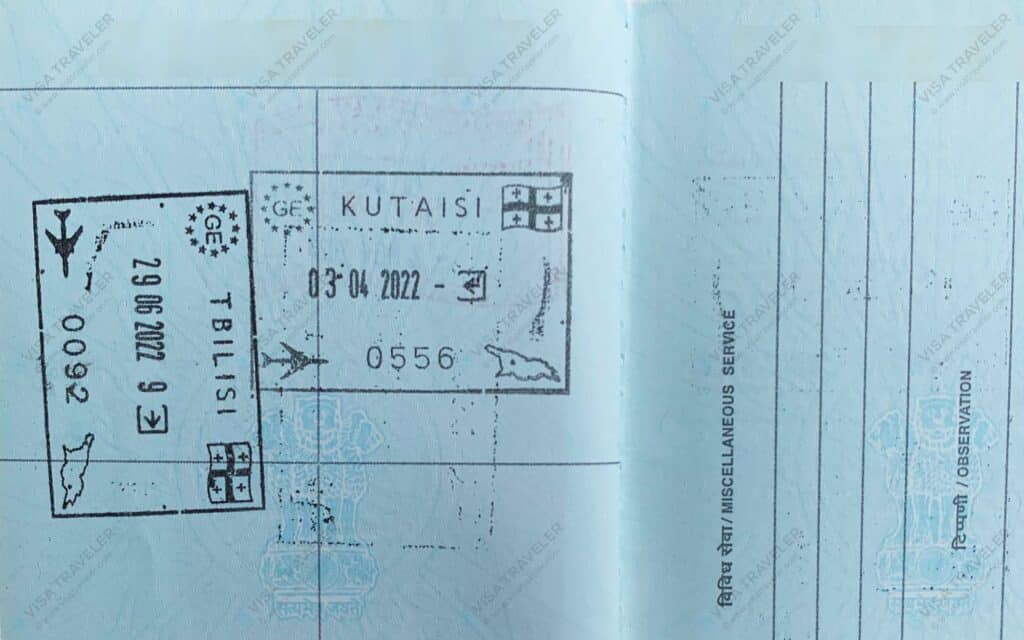
26. Albania
- Eligible Nationalities: All nationalities
- Official source: Ministry of Foreign Affairs of Albania
27. Armenia
- Marshall Islands
- Saint Kitts and Nevis
- Saint Lucia
- Solomon Islands
- Trinidad and Tobago
- Entry granted: 21 or 120 days
- Visa is NOT EXEMPT, but green card holders are eligible to obtain Visa ON ARRIVAL
- VOA fee is 3,000 AMD, valid for 21 days, single-entry (OR) 15,000 AMD, valid for 120 days, single-entry
- Official source: Ministry of Foreign Affairs of Armenia
28. Bosnia and Herzegovina
- Eligible nationalities: All nationalities, except Kosovo
- Official source: Ministry of Foreign Affairs of Bosnia and Herzegovina
29. Georgia
- Entry rule: The total duration of consecutive stays must not exceed 90 days in any 180-day period
- Official source: Ministry of Foreign Affairs of Georgia
30. Moldova
- São Tomé and Príncipe
- South Africa
- Official source: Ministry of Foreign Affairs of the Republic of Moldova
31. Montenegro
- Official source: Government of Montenegro
- Official source: Ministry of Foreign Affairs of Serbia
- Algeria (those aged 15-18 and 35-65)
- North Korea
- Visa is NOT EXEMPT, but green card holders are eligible to apply for Turkey e-Visa online
- E-Visa fee is $43 USD, validity is 180 days, and single-entry only
- Official source: Ministry of Foreign Affairs of Turkey
If you hold a US green card and are eligible to apply for a Turkey e-Visa, read this step-by-step guide to apply for Turkey e-Visa . This step-by-step guide has instructions and screenshots to guide you in filling out the application and downloading your approved e-Visa.
34. United Kingdom
- Entry granted: 24 hours only (Transit Without Visa)
- Visa is NOT EXEMPT, but green card holders are eligible to request a 24-hour entry at London (LHR) or Manchester (MAN) airports
- Must be traveling to or from the US only
- Must arrive and depart by air only
- Must hold the boarding pass for the onward flight
- Onward flight must be within 24 hours (on the same day or the next day before midnight)
- Granting 24-hour entry into the UK with a green card is at the sole discretion of the immigration officer
- Official source: GOV.UK
RELATED: How to turn your weak passport into a strong passport (with examples)
Middle East

35. Bahrain
- Entry granted: 14 days or 30 days
- Visa is NOT EXEMPT, but are eligible to obtain Visa ON ARRIVAL or Bahrain eVisa
- Single-entry VOA fee is 5 BD, valid for 14 days, entry up to 14 days
- Single-entry eVisa fee is 9 BD, valid for 14 days, entry up to 14 days
- Multiple-entry VOA fee is 12 BD, valid for 3 months, entry up to 30 days
- Multiple-entry eVisa fee is 16 BD, valid for 1 month, entry up to 14 days
- For VOA, the green card must be valid for the entire stay in Bahrain
- For eVisa, the green card must be valid for at least 6 months from the day of arrival
- Official source: Bahrain eVisa Portal
- Congo, Dem. Rep. of
- Guinea Bissau
- Visa is NOT EXEMPT, but green card holders are eligible for Jordan e-Visa
- Official source: Jordan E-Visa
- Entry granted: 10 or 30 days
- Visa is NOT EXEMPT, but green card holders are eligible to obtain Oman 26M or 26N Tourist Visa online
- 26M eVIsa fee is 20 OMR, valid for 30 days, single-entry only
- 26N eVIsa fee is 5 OMR, valid for 10 days, single-entry only
- Official source: Sultanate of Oman, Royal Oman Police
- Visa is NOT EXEMPT, but are eligible to apply for A3 Visa online on the Hayya Portal
- A3 Visa fee is QAR 100, valid for 30 days, single-entry only
- Must provide hotel booking for the entire stay reserved through the Discover Qatar website
- Green card must be valid on the day of A3 Visa application
- Official source: Qatar Tourism Board
39. Saudi Arabia
- Visa is NOT EXEMPT, but are eligible to obtain Visa ON ARRIVAL or Saudi Arabia eVisa
- VOA or eVisa fee is 300 SAR, valid for 1 year, multiple-entry (plus service fee and insurance fee)
- Official source: Saudi Arabia Tourism Authority
40. United Arab Emirates
- Eligible Nationalities: India passport holders only
- Entry granted: 14 days
- Visa is NOT EXEMPT, but green card holders are eligible to obtain Visa ON ARRIVAL at UAE airports
- VOA fee is 100 AED, valid for 14 days, single-entry only
- Official source: UAE Government Portal
RELATED: 5 ways to get proof of onward travel for your next trip

41. Morocco
- Visa is NOT EXEMPT, but green card holders are eligible to apply for Morocco e-Visa online
- E-Visa fee is 770 MAD, valid for 180 days, single-entry only
- Green card must be valid for at least 90 days from the day of arrival
- Official source: Morocco E-Visa Portal

- Visa is NOT EXEMPT, but green card holders are eligible to apply for Japan eVisa
- E-Visa fee is JPY 3,000, valid for 90 days, single-entry only
- Must submit proof of residence to prove that you reside in those countries
- Must show the visa issuance confirmation via the eVisa website on your phone at the immigration (Prints and PDFs are not accepted)
- Must enter Japan by flight only
- Official source: Ministry of Foreign Affairs of Japan
43. Malaysia (Currently suspended)
- Entry granted: 120 hours (5 days)
- Visa is NOT EXEMPT but green card holders are eligible to obtain Transit Without Visa (TWOA) at the VOA counter
- TWOA is free of charge, valid for 120 hours (5 days), single-entry only
- TWOA is available at Kuala Lumpur Airport (KLIA1 and KLIA2 terminals) only
- Issuing of TWOA is at the discretion of the immigration offices at Kuala Lumpur Airport
- Official source: High Commission of Malaysia in New Delhi, India
44. Philippines
- Green card must be valid for the entire duration of the stay
- Passport must be valid for at least 6 months beyond the date of departure
- Official source: Embassy of the Philippines in India
45. Singapore
- Entry granted: 96 hours (4 days)
- Visa is NOT EXEMPT but are eligible to obtain Visa Free Transit Facility (VFTF) upon arrival
- Must be traveling to or from the country of passport. Example: Must be traveling to a third country from India via Singapore or traveling to India from a third country via Singapore. An example itinerary would be India-Singapore-Bali or Bali-Singapore-India.
- Both arriving and departing flights in Singapore must be on the same itinerary
- Green card must be valid for at least 1 month at the time of arrival
- Official source: Singapore Immigration & Checkpoints Authority
46. South Korea
- Eligible nationalities: All nationalities (except these 23 countries – Afghanistan, Bangladesh, Cameron, Cuba, Egypt, Gambia, Ghana, Iran, Iraq, Kosovo, Kyrgyzstan, Myanmar, Nepal, Nigeria, Pakistan, Palestine, Senegal, Somalia, Sri Lanka, Sudan, Syria, Uzbekistan and Yemen)
- Entry rule: Must be traveling to/from the US through South Korea (OR)
- Official source: South Korea Embassy in Washington DC, USA
- Visa is NOT EXEMPT but are eligible to apply for ROC Travel Authorization Certificate online
- ROC Travel Authorization Certificate is free of charge, valid for 90 days, multiple-entry
- If using an EXPIRED US green card, the green card must have expired in the last 10 years only
- Official source: Bureau of Consular Affairs of Republic of China (Taiwan)
48. Thailand
- Entry granted: 60 days
- Visa is NOT EXEMPT, but are eligible to apply for Thailand e-Visa online
- E-Visa fee is 40 USD, valid for 90 days or 180 days, single or multiple-entry
- Official source: Thailand e-Visa Portal
There are about 48 countries green card holders can travel without visa. US green card holders had to invest enormous amounts of money and time to acquire the green card, which will eventually lead to US citizenship. Therefore, countries believe that US green card holders will not jeopardize their chances of becoming US citizens by remaining illegally in another country. They consider green holders as genuine travelers and provide them with VISA-FREE access.
There you go, guys! Those are the 48 countries you can visit with a green card without a visa. If you know any country that I haven’t listed, let me know in the comments below.
Change history: For those who are interested, here are the changes to this list.
03 Feb 2024
- Added: El Salvador, Guatemala, Honduras, Nicaragua, British Virgin Islands, Colombia, Moldova, Saudi Arabia
WRITTEN BY THIRUMAL MOTATI

Thirumal Motati is an expert in tourist visa matters. He has been traveling the world on tourist visas for more than a decade. With his expertise, he has obtained several tourist visas, including the most strenuous ones such as the US, UK, Canada, and Schengen, some of which were granted multiple times. He has also set foot inside US consulates on numerous occasions. Mr. Motati has uncovered the secrets to successful visa applications. His guidance has enabled countless individuals to obtain their visas and fulfill their travel dreams. His statements have been mentioned in publications like Yahoo, BBC, The Hindu, and Travel Zoo.
PLAN YOUR TRAVEL WITH VISA TRAVELER
I highly recommend using these websites to plan your trip. I use these websites myself to apply for my visas, book my flights and hotels and purchase my travel insurance.
01. Apply for your visa
Get a verifiable flight itinerary for your visa application from DummyTicket247 . DummyTicket247 is a flight search engine to search and book flight itineraries for visas instantly. These flight itineraries are guaranteed to be valid for 2 weeks and work for all visa applications.
02. Book your fight
Find the cheapest flight tickets using Skyscanner . Skyscanner includes all budget airlines and you are guaranteed to find the cheapest flight to your destination.
03. Book your hotel
Book your hotel from Booking.com . Booking.com has pretty much every hotel, hostel and guesthouse from every destination.
04. Get your onward ticket
If traveling on a one-way ticket, use BestOnwardTicket to get proof of onward ticket for just $12, valid for 48 hours.
05. Purchase your insurance
Purchase travel medical insurance for your trip from HeyMondo . HeyMondo offers a 5% discount to Visa Traveler readers (use the link above), and covers all medical and travel emergencies during your trip.
Need more? Check out my travel resources page for the best websites to plan your trip.
LEGAL DISCLAIMER We are not affiliated with immigration, embassies or governments of any country. The content in this article is for educational and general informational purposes only, and shall not be understood or construed as, visa, immigration or legal advice. Your use of information provided in this article is solely at your own risk and you expressly agree not to rely upon any information contained in this article as a substitute for professional visa or immigration advice. Under no circumstance shall be held liable or responsible for any errors or omissions in this article or for any damage you may suffer in respect to any actions taken or not taken based on any or all of the information in this article. Please refer to our full disclaimer for further information.
AFFILIATE DISCLOSURE This post may contain affiliate links, which means we may receive a commission, at no extra cost to you, if you make a purchase through a link. Please refer to our full disclosure for further information.
RELATED POSTS
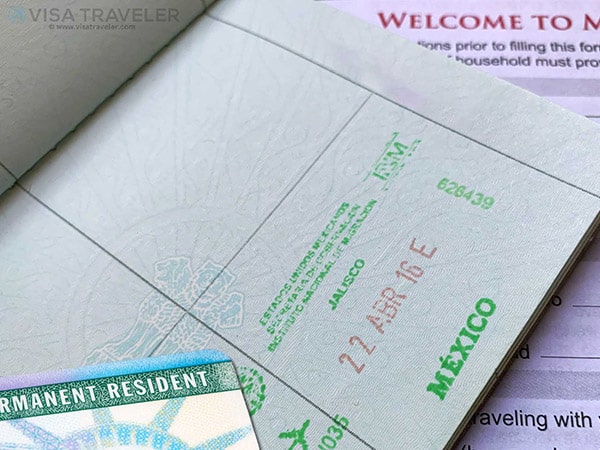
RUBI XU says
November 30, 2023 at 5:11 pm
Hi, I don’t think your information is correct. UK would absolutely need visa.
Thirumal Motati says
December 1, 2023 at 3:52 am
Hi Rubi! All information is verified, either by me or fellow readers. This is actually the major difference between us and other visa websites out there. We (I, my team or my readers) personally travel and enter the country to verify the information. You can join our FB group and ask your question there. You will find quite a few readers who were able to get a 24hr entry at Heathrow using their green cards or US visas.
November 11, 2022 at 11:14 pm
Hello, thank you for this information. I am a Ghanaian Citizen, but I hold an American Green Card. What 3 countries can I visit without having to apply for any form of Visa?
November 21, 2022 at 4:18 am
Hi Rama! Within “Permitted nationalities”, if “Ghana” or “All nationalities” is listed, then you can travel to that country without a visa. All you need is your Ghana passport and US green card.
September 28, 2022 at 11:56 pm
UAE visa on arrival validity is 14 days with another 14 days of the grace period. So the total is 28 days.
October 7, 2022 at 4:49 am
Hi Asdf! Thanks! I’m aware of the fact that there is a grace period but I couldn’t confirm if it’s 14 days or less. For my latest VOA, when looked up on the Smart Services portal, the grace period was only 11 days. I entered on 21 Mar 2022 and the expiration was 14 Apr 2022. The total days on my visa were only 25 days, i.e 14 + 11 days. So if I tell my readers that they can stay additional 14 days and if they get fewer days grace period, they would end up overstaying their visas. Then I would be responsible for that. To confirm any information, (1) I would need an official source, and (2) I should be able to verify the info myself for my own VOA to confirm.
Abdullah Niaz says
August 18, 2022 at 1:06 am
What about Saudi Arabia? https://www.bal.com/bal-news/saudi-arabia-visas-on-arrival-now-available-to-holders-of-us-uk-schengen-visas/
August 22, 2022 at 10:27 am
Hi Abdullah! As per the official sources, Saudi Arabia only accepts US, UK and Schengen visas. If you hold a US visa, you can get VOA in Saudi Arabia. But if you hold a US green card, you cannot. Either way, contact Saudi authorities to get a confirmation.
Leave a Reply Cancel reply
READ BEFORE LEAVING A COMMENT: (1) Use the Search Form to see if your questions have already been answered in an existing article. (2) Ask your questions on Visa Traveler Facebook Group for quick response from us and other experienced visa travelers. (3) We cannot respond to questions on student visas, work visas or immigration. Our advice is purely for travelers needing tourist visas. (4) Due to overwhelming amount of questions, comments and messages we receive, please allow us 24-48 hours to respond to your query.
- Cookie Policy
- Copyright Notice
- Privacy Policy
- Terms of Use
- Flight Itinerary
- Hotel Reservation
- Travel Insurance
- Onward Ticket
- Testimonials
Search this site

How to Travel with a Green Card
A green card comes with several distinct benefits and rights as you settle into the United States as your long-term home. After all, your permanent legal resident status allows you to live and work in the US, not to mention enjoy full protection under the laws of the nation.
But while these benefits are clear, something that remains unclear to many is whether or not you can travel with a green card and if so, what kinds of green card rules and limitations apply to travel. And if you’ve been wondering the same thing, you’ve landed on the right article.
At SimpleCitizen, our mission is to simplify every aspect of the green card process, including how to use your green card once you have it. In this article, we’ll discuss traveling outside the US with a green card, the documentation you will need, and how traveling abroad will affect your chances at naturalization. Let’s get started!
Can I Travel With a Green Card?
Of course you can! However, traveling with a green card requires certain documents and steps you must take to ensure you can return once your travels are complete.
There are two primary documents you will need to travel abroad:
1. Your Green Card and;
2. A passport from your country of citizenship or your refugee travel document permitting travel to the foreign country. Sometimes, countries require visas and as such, you must have this in hand as well for entry/exit purposes.
When you’re ready to return to the United States, you only need to present your valid green card, Form I-551, at the port of entry. Sometimes, officials will request to see your passport or other identifying documentation to grant you reentry into the country.
3. With COVID-19 still in full swing certain countries may have travel restrictions and COVID-19 vaccination requirements or require a negative COVID-19 test result. Be sure that you check the travel rules as you plan your trips to ensure you don’t run into any issues getting in or out of the country.
What Steps Do I Need to Take Before Traveling?
If you’re planning on traveling abroad for less than one year, there are no additional steps you must take in preparation for your trip. In fact, all you need are the documents mentioned above to ensure you can leave and return to the US.
If you’re planning on traveling for more than one year, there are additional steps you must take before leaving the country. This is because you must demonstrate that you aren’t abandoning your permanent resident status and are planning to return to reside in the United States once again.
For Trips More Than One Year in Length
Should your trip be more than one year, it’s beneficial to file Form I-131 , Application for Travel Document, prior to leaving. This Form allows a permanent resident to apply for a Reentry Permit for admission to the United States after returning from abroad. Doing so eliminates the need for a returning resident visa from a U.S. embassy or consulate and clarifies your intention to return to America after your travels.
Obtaining a Reentry Permit costs $360 plus a biometrics service fee of $85 if you are between the ages of 14 and 79, making the total fee $445. Please note that the Reentry Permit doesn’t guarantee your admittance to the country. While it will help, officials will also consider factors such as:
- Have you maintained family and community ties in the U.S. while abroad?
- Have you filed your U.S. income taxes as a resident?
- Have you maintained a U.S. mailing address?
- Do you have a valid driver’s license in the U.S.?
- Do you own property or run your own business in the U.S.?
- Have you applied for U.S. Citizenship?
Questions like these directly affect your chances of being allowed back into the country after a year abroad. Immigration officials are simply looking to see whether or not you still have the intention of living in the United States permanently.
For Trips More Than Two Years in Length
If you’re planning on remaining outside of the United States for more than two years, a Reentry Permit granted before your departure will no longer be valid when you return (these Permits are only valid for two years). As such, you should apply for a Returning Resident Visa, SB-1, at a U.S. Embassy or Consulate.
You should apply for this Visa at least three months in advance of your travel (or as soon as possible) to ensure it can be processed in time. To apply for the Visa, you will need:
- A completed Form DS-117, Application to Determine Returning Resident Status;
- Form I-551, Your Permanent Resident Card (green card);
- Your Reentry Permit (if you have obtained one);
- Dates of travel outside the US (airline tickets, passport stamps, etc.);
- Proof of ties to the United States (like those indicated in the section above); and
- Proof that your stay outside of the United States is for reasons beyond your control (medical reasons, employment with a U.S. company, etc.).
Obtaining this Visa will ensure that you can return to the United States after an extended stay abroad. While it is optional, you should consider it a necessity if you’re going to travel for more than two years.
Please note that there are exceptions for Visas and other documentation needs if you’re moving abroad with a spouse for a government job or military involvement.
Does Traveling Affect the Naturalization Process?
If you’re going to be outside of the United States for more than six months, you may affect requirements necessary for naturalization. In fact, there are green card rules for travel abroad. For example, you may not be allowed to travel abroad if you haven’t been physically present in the country for at least 30 months out of the previous five years. This is an example of continuous residency requirements.
Should you not meet requirements like this, you may still be eligible for naturalization. You will need to take additional steps to prove that abandonment wasn’t an abandonment of your resident status to ensure you can remain on the path to citizenship.
If your trip must be more than six months, you may choose to file Form N-470, Application to Preserve Residence for Naturalization Purposes. This is only available to legal permanent residents looking to leave the United States for employment purposes. The Form costs $330 to file. If you’re unable to pay this fee, you may submit Form I-912 with your application for a fee waiver request.

Simplify Your Travel Abroad With SimpleCitizen
The team at SimpleCitizen believes that your experience living in the United States shouldn’t be complicated. Likewise, you should be able to travel abroad while retaining your legal permanent status. For that reason, we hope you find this article helpful with the information you need to travel with peace of mind.
Want to Learn More About Traveling Abroad?
If you’re looking to learn more about international travel with a green card, check out the links below!
USCIS: International Travel as a Permanent Resident
USCIS: Maintaining Permanent Residency
Form I-131, Application for Travel Document
Form N-470, Application to Preserve Residence for Naturalization Purposes
Was this article helpful?
Leave a comment cancel.

- Make a Payment
- Firm Philosophy
- Testimonials
- In the Community
- For Referring Attorneys
- Professional Associations and Memberships
- Publications and Presentations
- Awards Received
- Why You Need a Consultation
- Schedule a Consultation
- Answers for Detained Individuals and Individuals Appearing in Immigration Court
- Answers for Individuals and Families
- Collaboration
Recent News
- Translate Website
For More Information
- Name * First Last
- Email Address *
What Documents Do I Need to Travel Within the United States?
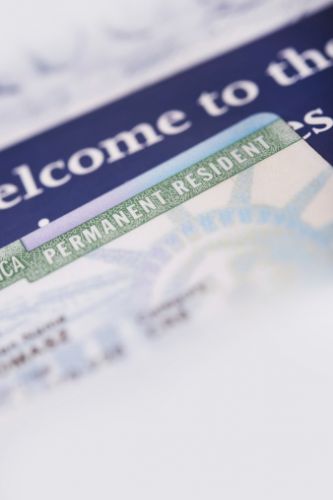
If you're a lawful permanent resident or nonimmigrant visa holder, you know that you need to be mindful of how travel outside of the United States may affect your return to this country . But even if you aren't leaving the United States, it's a good idea to be aware of documents for travel within the United States you should carry with you. Even native U.S. citizens have to carry identification when traveling, at least by air, and naturalized citizens and non-citizens should be certain to have the right documentation, too.
Documents for Travel within the United States as a Green Card Holder
If you are a lawful permanent resident , or green card holder, you are required by U.S. immigration law to keep your green card with you at all times, especially when traveling. Even if you are traveling by car and do not need to present identification at the airport, you should always have your green card within reach. If you should be stopped by police while driving or under any other circumstance, you will be glad that you are readily able to prove your legal immigration status.
If you have a green card, it's not necessary to carry a passport with you for domestic travel within the United States. That said, it's never a bad idea to have plenty of documentation, and if you have a passport, you may wish to keep that with you throughout your domestic travel as well.
If you are flying, it's highly recommended that you have your passport with you as a form of photo ID. Many states are in the process of changing their laws about what is acceptable in terms of photo identification for flying. A passport is the "gold standard" for photo ID when traveling, so if you have one, carry it.
It is possible that you would be permitted to board your airplane even without your photo ID. You might be required to provide airport personnel with sufficient personal information to allow them to match you with information in public or government databases. However, you should not count on being able to do this. If your identity cannot be confirmed in this way, you will be out of luck and unable to get on your plane. The moral of the story: if you have a passport, carry it.
Domestic Travel in the U.S. for Nonimmigrants
Unsurprisingly, nonimmigrant visa holders have an even greater need to have their paperwork with them as they travel throughout the United States. If you are a nonimmigrant, keep your visa documents with you whether traveling by car, bus, train or plane. You also need to have your passport from your home country with you at all times.
If you have an international driver's license, you should have this on your person as well—obviously if you are driving, but even if traveling by other means.
U.S Travel for Naturalized Citizens
As a naturalized citizen, you have the same freedom to travel within the United States as a citizen who was born here. But even citizens , no matter where they were born, need to have photo ID on them when traveling. If you don't yet have a U.S. passport, you will want to get one, even if you don't intend to travel outside the country in the foreseeable future. A passport is one of the preferred methods of identification for domestic air travel. It can take several weeks to process a passport, but a U.S. passport for an adult is valid for ten years, so don't wait until you have travel plans to apply for one.
Other acceptable forms of identification include a driver's license, state-issued identification card (if you don't drive), or a military ID. Some form of photo ID is required for air travel, and is often necessary when renting a vehicle or checking in to a hotel.
Some general travel tips: never put your identification or immigration documents in checked luggage when traveling; keep it on your person at all times. Before you leave home, make copies of all of your documents and, if possible, leave them with a trustworthy person who will keep them safe and can transmit them to you if needed. You may also wish to photograph your original documents and keep those images on your smartphone in the event the originals get lost. Officials may not accept the photographed documents as proof of your status, but having these digital copies can help you when you need to seek replacements for your original documentation.
If you have questions about domestic travel within the U.S., we invite you to contact our law office .
Practice Areas
© 2024 Law Offices of Van T. Doan, LLC Maryland Immigration Attorney View Our Disclaimer | Privacy Policy Law Firm Website Design by The Modern Firm
COVID-19 Quarantine Update
In regards to Covid-19, We are reviewing the best guidelines for our city and state for how
we should conduct business and plan to update this message as soon as we can.
Please call our office(s) to get learn how we are engaging with current clients and new at this time.
An official website of the United States government
Here's how you know
Official websites use .gov A .gov website belongs to an official government organization in the United States.
Secure .gov websites use HTTPS A lock ( Lock Locked padlock icon ) or https:// means you’ve safely connected to the .gov website. Share sensitive information only on official, secure websites.
Welcome to USA.gov
Benefits.gov has been discontinued. USA.gov is the new centralized place for finding government benefits for health care, housing, food, unemployment, and more.
- Continue to USA.gov
Travel documents for foreign citizens returning to the U.S.
If you are a citizen of another country and have been living in the U.S., you may need special documents if you leave the U.S. and then return.
Travel documents for permanent and conditional permanent residents
If you are outside the u.s. for less than one year.
If you are a permanent or conditional permanent resident who has been away from the U.S. for less than one year, you will only need to show your Green Card upon re-entry to the U.S.
If you are outside the U.S. for one year or longer
If you are a permanent or conditional permanent resident who has been outside the U.S. for one year or longer, apply for a re-entry permit before you travel. Use Form I-131 - Application for Travel Document .
- For permanent residents, the re-entry permit is valid for two years from the date of issue.
- For conditional permanent residents, the re-entry permit is valid for two years after the date of issue. Or it is valid up until the date you must apply for removal of the conditions on your status , whichever date comes first.
Travel documents for other foreign citizens living in the U.S.
If you are a foreign citizen re-entering the U.S., the documentation you need may depend on your immigration status:
- Advance parole - You may use advance parole to re-enter the U.S. without applying for a visa. It is commonly used for re-entry by people in the process of applying for permanent residence, applying for a status adjustment, or applying for asylum.
- Refugee travel document - You may be able to use this document to re-enter the U.S. if you have refugee or asylum status.
If you need help, contact U.S. Citizenship and Immigration Services (USCIS) .
LAST UPDATED: May 22, 2024
Have a question?
Ask a real person any government-related question for free. They will get you the answer or let you know where to find it.
- (888) 777-9102
- Learning Center

- How It Works
- All Packages & Pricing
- I-90 Application to Replace Permanent Resident Card
- I-129F Petition for Alien Fiancé
- I-130 Petition for Alien Relative
- I-131 Application for Travel Document
- I-485 Adjustment of Status Application
- I-751 Remove Conditions on Residence
- I-765 Application for Employment Authorization
- I-821D DACA Application Package
- I-864 Affidavit of Support
- N-400 Application for Naturalization
- N-565 Application to Replace Citizenship Document
- Citizenship Through Naturalization
- Citizenship Through Parents
- Apply For Citizenship (N-400)
- Apply for Certificate of Citizenship (N-600)
- Replace Citizenship Document (N-565)
- Apply for a Green Card
- Green Card Renewal
- Green Card Replacement
- Renew or Replace Green Card (I-90)
- Remove Conditions on Green Card (I-751)
- Green Card through Adjustment of Status
- Adjustment of Status Application (I-485)
- Affidavit of Support (I-864)
- Employment Authorization (I-765)
- Advance Parole Application (I-131)
- Adjustment of Status Fee
- Family-Based Immigration Explained
- Search the Learning Center
- Request Support
- Find an Immigration Attorney

- Application for Naturalization & U.S. Citizenship (Form N-400)
How do I find travel records for the N-400 application?
Home » How do I find travel records for the N-400 application?
April 20, 2021
Applicants preparing Form N-400, Application for Naturalization , must list each trip outside the United States (in excess of 24 hours). Part 9 of the N-400 application includes a table to list these individual trips.

Generally, you can find your travel history information inside your official passport. Simply review the passport page for date stamps from the various trips. But, in some cases, you may not have your passport or are missing known records.
Personal Travel Records
You may be able to use your personal records to reconstruct travel history. In the absence of “official records” it’s still your duty to estimate the dates of your travel to the best of your ability. Check with relatives you may have visited, review credit card statements, or try to recover old travel records from airline or transportation company frequently flyer statements.
Mistakes on your N-400 application can cause costly delays or a denial.
Foia request for travel records.
If you are unable to locate your travel history records through the methods listed above, you can submit a Freedom of Information Act (FOIA) request to U.S. Customs and Border Protection (CBP). Generally, personal FOIA requests are free (if less than 100 pages of photocopies). Be sure to limit your request to the previous five years. You only need five years of history for the purposes of the N-400 application. A more extensive search will take longer and may even result in a photocopy fee (up to $25). A FOIA request will generally take several weeks.
In some instances, you may have traveled across a U.S. border without any records. This can happen at some land border crossings where you were “waved” across by CBP officer. The CBP office did not provide any stamps or documentation. It’s still your responsibility to record these trips on Form N-400 to the best of your ability.
Immigration Form Guides Form I-90 Form I-129F Form I-130 Form I-131 Form I-131A Form I-131F Form I-134 Form I-485 Form I-751 Form I-765 Form I-821D Form I-864 Form N-400 Form N-565 Form N-600
Sign Up to Receive Free Monthly Information for Your Immigration Journey
© Copyright 2013-2024, CitizenPath, LLC. All rights reserved. CitizenPath is a private company that provides self-directed immigration services at your direction. We are not affiliated with USCIS or any government agency. The information provided in this site is not legal advice, but general information on issues commonly encountered in immigration. CitizenPath is not a law firm and is not a substitute for an attorney or law firm. Your access to and use of this site is subject to additional Terms of Use .


As A US Permanent Resident, Can I Travel with a Green Card and No Passport?
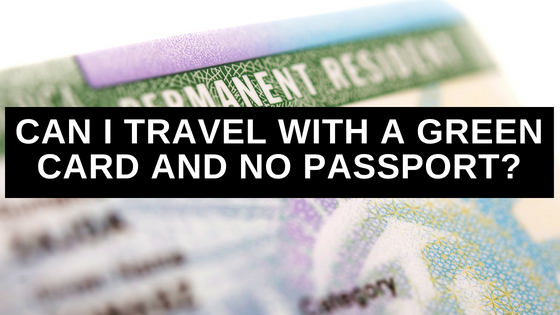
As a US permanent resident, you may be wondering whether you can travel outside of the US with your green card and no passport. The short answer is: maybe .
In this guide, I will discuss how to travel using your green card and no passport by using a reentry permit instead of a passport. I will also discuss the benefits of having a reentry permit.
If you have any questions, feel free to email me directly at [email protected] .
1. What Documents do I Need to Travel Outside of the US?
2. how can i travel with a green card and no passport, 3. what are the requirements to get a reentry permit, 4. how long can i leave the us as a permanent resident, 5. how can a reentry permit help me, 6. what are the limitations of a reentry permit, 7. what are some ways to protect my status as a permanent resident, 8. conclusion.
- As a US permanent resident (green card holder) you are allowed to travel outside of the US.
- To travel outside of the US you will need 3 documents: 1) your permanent resident card; 2) your passport; and 3) any visas that are required by the foreign country you are travelling to.
- The laws of the United States do not require a lawful permanent resident to have a passport to enter the United States. However, you will likely need a passport to enter another country .
- Also, the airline that you’re travelling with may require you to have a passport.
- If you don’t have a passport, I’ll explain how you may still be able to travel below.
Even if you do not have a valid passport, you may still be able to travel using your green card and a reentry permit. Here’s how:
- Many US permanent residents do not have a valid passport from their country of citizenship. In many cases, they are either unable to get a passport or it would be extremely difficult to get a passport.
- In these situations, a lawful permanent resident can apply for a reentry permit .
- A reentry permit is a travel document. It is a small booklet which has an identification page and also has many blank pages for stamps and visas.
- When a permanent resident cannot get a passport from their country of citizenship, a reentry permit can substitute for the passport.
- Many countries allow a reentry permit to be used in-place of a passport.
- The reentry permit can be stamped like a passport and can have visas attached to it like a passport would.
- However, you have to make sure that the country you intend to visit will accept a reentry permit in-place of a passport. This is ultimately up to the country you intend to visit.
- The reason why my answer in the introduction is “maybe” is because whether you can travel without a passport will depend on whether the country you are travelling to will allow you to use a reentry permit instead of a passport.
To get a reentry permit, there are 5 main requirements:
- You must be a US permanent resident
- You must submit a Form I-131 with USCIS with some supporting documentation
- You must be physically present in the US when your reentry permit application is filed and accepted by USCIS
- You must attend a biometrics (digital fingerprinting) appointment in the US
- You must intend to depart the United States temporarily . This means that at the time you leave the US until the time you return, you must maintain the intent to return to the US as your home.
- As a US permanent resident, you can leave the US for up to 1 year and use your permanent resident card (Form I-551) to reenter the US.
- However, once you’re out of the US for more than 6 months, you are eligible for additional immigrant inspection procedures. Immigration officials may question you to determine whether you have abandoned your green card based on your absence. Below, I’ll explain how a reentry permit can help in this situation.
- If you’re outside of the US for longer than 1 year, your green card (Form I-551) can no longer be used to reenter the US. You will either need a valid reentry permit to reenter the US or you will need to apply for a returning resident visa (SB1 visa).
A reentry permit has 3 main benefits:
- Travel Document : If you cannot get a passport, you may be able to use your reentry permit instead of a passport (if the countries you plan to visit will accept the reentry permit as a valid form of travel document).
- Protect Status : As I mentioned above, if you leave the US for over 6 months, you are eligible for additional inspection upon your return to the US. Immigration officials are checking if you’ve abandoned your permanent resident status. A reentry permit creates a legal presumption that you did not intend to abandon your green card.
- US Entry Document : If you leave the US for longer than 1 year, your green card (Form I-551) is no longer valid to reenter the US. A reentry permit is valid for up to 2 years from the day it is issued and can be used to reenter the US as long as it is still valid.
- If you are using a reentry permit instead of a passport, you can only do so if the country you plan to visit accepts a reentry permit as a valid substitute to a passport .
- A reentry permit does not guarantee that you will be admitted to the US. A reentry permit creates a legal presumption that you did intend to maintain your permanent resident status. However, USCIS can still overcome this legal presumption if there is enough evidence.
- If you are leaving the US for longer than 6 months, get a reentry permit;
- Maintain strong ties to the US;
- Filing taxes as a US resident;
- Maintaining a US address;
- Maintaining a valid driver’s license;
- Owning property in the US;
- Owning a US-based business;
- Having a US bank account;
- To the extent possible, maintain records and documents showing that your travel outside of the US was temporary.
As a US permanent resident, you are allowed to freely travel outside of the US. To travel, you usually need your permanent resident card, a valid passport, and whatever visas are required by the country you intend to visit.
While the US does not require permanent residents to have a valid passport to re-enter the US, foreign countries and airlines require you to have a passport.
If you do not have a valid passport and you cannot get one, you may be able to use a reentry permit instead of a passport.
As a US immigration lawyer , I can prepare and file your reentry permit application for you. If you have any questions, or if you’d like my help, please email me directly at [email protected] . I’d be happy to help you.
- Reentry Permit Guide: Everything to Know to Get Your Reentry Permit
- U.S. Customs and Border Protection – Traveling Outside of the U.S. – Documents Needed for Lawful Permanent Residents (LPR)/Green Card Holders
- USCIS – International Travel as a Permanent Resident
Share this post...

Michael Ashoori, Esq.
U.s. immigration lawyer.
I’m a U.S. immigration lawyer and I help families, professionals, investors, and entrepreneurs get visas, green cards, and citizenship to the United States.
Since starting my law firm, I’ve helped hundreds of people from all over the world with their immigration needs. I’m very passionate, hard-working, and committed to my clients.
Got a question? Send me an email.
CALL +1-818-741-1117
Compare U.S. green card paths
Traveling internationally as a green card holder here’s what you need to know.
By Annie Blay
Leaving and reentering the U.S. as a green card holder is relatively straightforward for short trips. If you plan to leave the U.S. for an extended time, there are a few things to consider.

Traveling internationally as a green card holder
The ability to travel internationally with ease is one of the benefits of having a green card. However, if you stay outside the U.S. for too long (more than a year), U.S. Customs and Border Protection (CBP) will consider your permanent residence status ”abandoned.”
You can generally stay outside the U.S. for up to six months yearly without problems.
If you stay outside the U.S. between six months and a year, you will most likely be subject to questioning from CBP at the U.S. port of entry. However, you should still be able to reenter.
Reentering the U.S. becomes challenging if you stay outside the country for more than a year. You can reenter with a Re-entry Permit (more on below), but you can only apply for a Re-entry Permit from within the U.S.
Another option for reentering the U.S. if you have been gone for more than a year is to apply for a returning resident visa at a U.S. embassy or consulate.
Also consider: staying outside the U.S. for more than a year as a green card holder can slow down the process of becoming a U.S. citizen. You can become a naturalized citizen after 3-5 years as a permanent resident.
However, if you are outside the U.S. for over a year, the 3-5 year timeline will restart. Under certain circumstances, U.S. Citizenship and Immigration Services ( USCIS ) may approve a request to preserve residence for naturalization purposes .
Best practices for international travel for U.S. permanent residents

1. If possible, spend at least half of the year in the U.S.
Being physically present in the U.S. for at least six months per year is the best practice for green card holders.
2. Know the risks of long-term travel
Perhaps you need to care for family members in a foreign country, or you want to travel extensively for pleasure.
Regardless of your reasons for travel, there are risks you should understand when considering a lengthier trip.
The best practice is to limit your international travel to under six months, but you can travel for up to a year without needing a re-entry permit.
If you stay outside the U.S. for over a year and do not have a re-entry permit, CPB may consider your green card “abandoned”. In other words, your
Whether you have a re-entry permit or not, staying outside the U.S. for more than a year will also restart the clock for becoming a naturalized citizen.
3. If necessary, apply for a re-entry permit before you leave the U.S.
You cannot apply for a re-entry permit from outside the U.S.
If you know you will be traveling outside the U.S. for more than a year, apply for a re-entry permit before you leave.
To get a re-entry permit, you must file Form I-131, Application for Travel Document .
Upon approval, your re-entry permit will be valid for up to two years.
4. Pack the documents you need for re-entry
Before you leave the U.S., ensure you have all the documents you’ll need to reenter, including a valid passport, green card, and a re-entry permit (if necessary). If you came to the U.S. as a refugee, you will also need to bring your refugee travel document .
5. If you are unsure about your case, check with an immigration lawyer
If you have any doubts about your unique situation, consider speaking to a trusted immigration law firm for legal advice.
Traveling internationally with a pending green card application
If you don’t have an approved green card yet, you may still be able to travel internationally while your application is pending.
How to travel internationally on a dual intent visa with a pending green card
If you are in the U.S. on a valid dual intent nonimmigrant visa (such as H-1B or L-1), you can travel internationally throughout the green card application process.
How to travel internationally with a pending green card if you don’t have a dual intent visa
If you are in the U.S. on a single intent nonimmigrant visa (such as TN or E-3) or have a pending asylum case, you cannot travel internationally while your green card is processed unless you get an Advance Parole travel document .
To request Advance Parole, file Form I-131 when you file your green card application or after the application has been submitted.
It will likely take several months for your Advance Parole application to be approved. If you need it approved more quickly for emergency reasons, you can submit an expedite request.
Upon approval of your Advance Parole, you can leave the U.S. and reenter with the approved travel document.
Frequently asked questions about travel on a green card
Do lawful permanent resident and green card holder have the same meaning?
Yes. Lawful permanent resident (LPR) and green card holder both refer to foreign nationals who hold green cards (also called permanent resident cards).
What is the difference between Form I-485 and Form I-140 ?
Form I-485, Application to Register Permanent Residence or Adjust Status, is the green card application.
Form I-140, Immigrant Petition for Alien Worker, is a petition that qualifies a foreign national for a green card based on their employment.
Read more about the difference between Form I-1485 and Form I-140 .
Do I need a travel document if I have a green card?
No. If you have an approved green card, you do not need a travel document (Advanced Parole) to leave and reenter the U.S.
Can I travel inside the U.S. with a green card?
Yes, you can travel from state to state with a green card.
How does the U.S. government determine whether you have abandoned your permanent resident status?
There are a few factors the U.S. government considers when determining green card abandonment:
- How long you spent outside the U.S.
- Your purpose for traveling outside the U.S.
- Whether you intend to return to the U.S. as an LPR
- Whether you have continued ties to the U.S. as your permanent home
What happens if you abandon your green card?
If the U.S. government determines that you have abandoned your green card, your green card will no longer be valid. To become a permanent resident again, you must restart the green card application process.
How do I achieve lawful permanent resident status through employment?
Permanent residency eligibility can be based on family, employment, or humanitarian reasons.
To become a permanent resident via employment, you’ll first need to file an immigrant visa application, such as an EB-1A or EB-2 PERM . Your immigrant visa application will include legal forms, a copy of your passport and any prior U.S. visa stamps, and other supporting documents.
Depending on your country of birth, you may be able to file your green card application right away, or you may need to wait until you become “ current .”
After filing your green card application, USCIS will ask you to submit a medical exam and attend a biometrics appointment at a nearby USCIS office.
Customized support on your immigration journey
An experienced immigration attorney can simplify the complexities of immigration law and the green card process. Reach out to our team for customized support on your immigration journey.
About the author:

Content Marketing Specialist
Before joining the marketing team, Annie helped over 60 Legalpad clients navigate U.S. immigration on the client services team.
Sign up for our newsletter
Get visa resources, immigration news, and event announcements delivered right to your inbox. Don't worry, if you change your mind, you can unsubscribe at any time.
Can you go on a cruise with a green card? What US permanent residents need to know about travel documents

Taking a cruise is relaxing, but making sure all your documents are in order for your sailing can be challenging, even more so for United States permanent residents who have a green card. The good news is that if you are a lawful permanent resident of the U.S., you are allowed to travel outside the country and can go on a cruise with your green card.
According to U.S. Customs and Border Protection , "If you are a Lawful Permanent Resident (LPR) of the United States, the U.S. government does not require you to have a passport for any travel, including air, land, or sea travel, however, you are even more likely to be required by your destination country to have one."
If you're a lawful permanent resident, you're cleared for foreign travel, but the documents you need for a cruise vacation might vary based on your departure port and destinations visited.
Here are the key points you need to know about travel documents if you'd like to go on a cruise as a green-card holder or other non-citizen resident of the U.S.
Does a green card count as a passport?
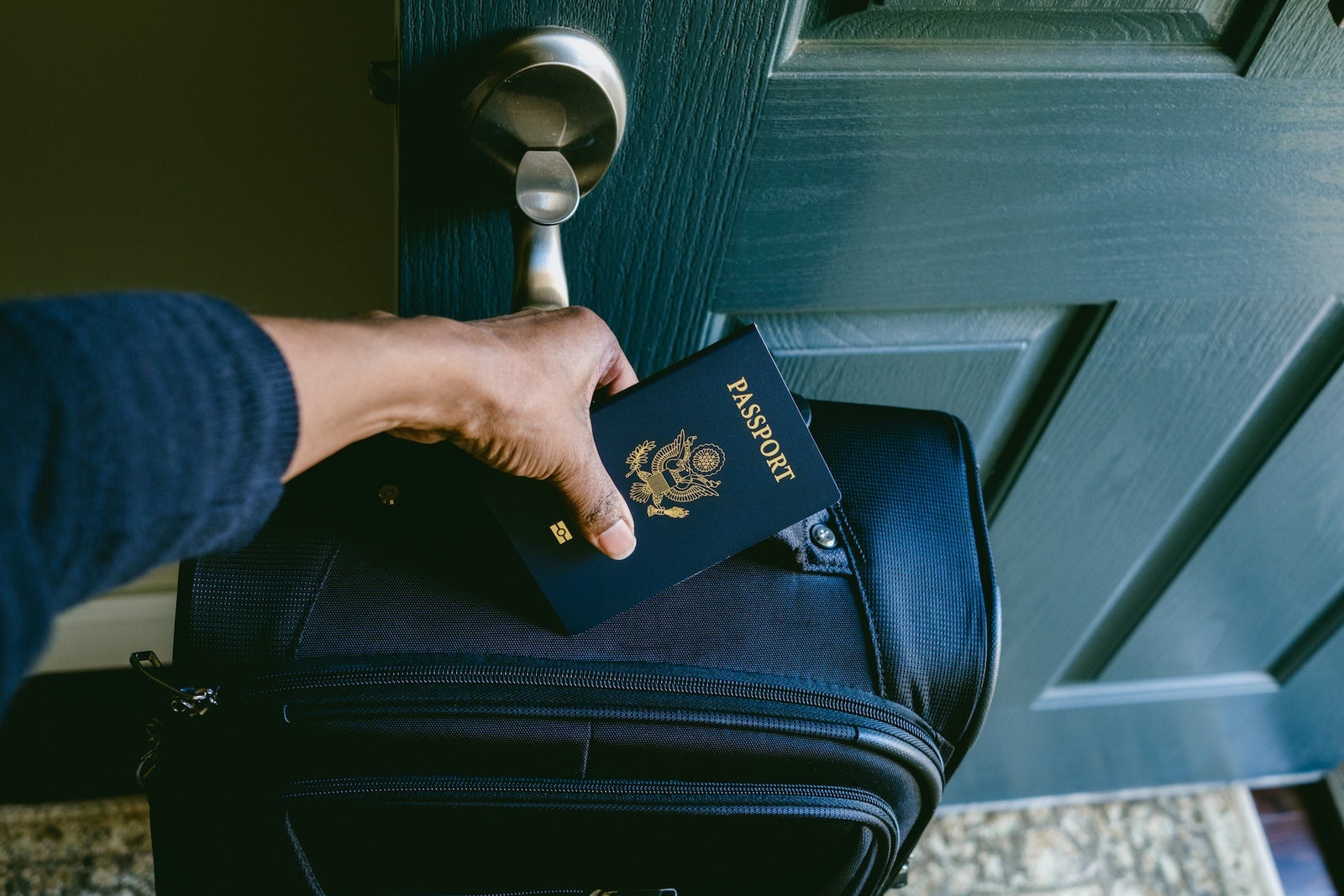
A green card and a passport are not the same. While both documents are proof of identity, a passport is evidence of your citizenship while a green card shows that you are legally permitted to live and work in the U.S. as a foreign national.
Can I cruise from the US with just a green card?
As a lawful permanent resident going on a cruise from and back to U.S. home ports, you will need your green card to prove your identity and citizenship status so you can reenter the U.S. at the end of your sailing. You'll have to show the card during the boarding process and again when you reenter the U.S. at the end of your sailing.
Whether you also need a passport from your home country depends on your exact itinerary and the cruise line you're sailing.
"A green card holder can sail on closed-loop sailings without a passport," a representative from Carnival Cruise Line explained, referencing round-trip cruises that begin and end in the same U.S. city that only visit nearby countries in the Western Hemisphere (e.g., the Bahamas and Caribbean islands).
However, there are exceptions. For example, permanent residents must bring their home country passport if their cruises stop in Canada, Colombia, Bermuda or Greenland. A closed-loop cruise visiting ports in Mexico might require a passport, another cruise line representative told us, so double-check if you're cruising to Puerto Vallarta or Cozumel.
Transatlantic and transpacific cruises and sailings that start in one U.S. city and end in another one (such as full Panama Canal transits) also require green-card holders to carry a passport.
Additionally, some cruise lines might require permanent residents to carry a passport regardless of itinerary, so make sure you check the policy of the line you intend to sail. It's generally a good idea, especially if something goes wrong on your vacation and you have to disembark early and fly home.
You might also need a tourist visa to enter the port depending on that country's rules for travel for citizens of your home country. If you need a visa, you typically will need to carry your home country passport as well.
To determine which ports require visas or passports to enter, you can enquire with your travel adviser or head to the government website or embassy of each country your cruise visits to research visa requirements, forms, information and fees for your nationality.
Related: What documents do you need for a cruise? From passports to printouts, here's what to take
Can I cruise internationally with a green card?

Lawful permanent residents are not limited to cruises from U.S. ports; they can book sailings in Europe, Asia, South America and other international destinations.
To enter another country by air, you will need a passport from your country of citizenship and potentially some travel visas. You'll need your green card to return to the U.S.
For example, if you're taking an Alaska cruise that departs from Vancouver, British Columbia, you will need a home country passport and a green card to go through international customs at the airport. If you're taking a cruise through Europe, you will need your green card, home passport and a visa.
All green-card users should contact the embassy or consulate of the countries on the itinerary to learn about the travel documents that are required. Depending on the ports of call, you might also need a Schengen visa , which allows entry and transit through 26 countries in Europe that are part of the Schengen Agreement. These countries include popular cruise destinations like France, Greece, Italy, Norway and Spain.
Related: Do I need a passport for a cruise?
What if I don't have a green card but want to travel under the Visa Waiver Program?
For those who are not U.S. citizens or lawful permanent residents, taking a cruise is still possible. If you are traveling under the Visa Waiver Program, you can use the immigration stamp (I-94W) that you were given when you first entered the U.S. to reenter the country at the end of a cruise. Just be sure that your cruise ends before the 90-day admission period that you were originally given with the stamp.
Additionally, if you're using an immigration stamp to reenter the U.S., you will need to be sure that your cruise isn't too far away, is only visiting nearby islands or the contiguous country, and that the trip does not take you outside the U.S. for more than 30 days.
If your cruise goes beyond the 90-day admission time, you will need to apply for a new admission period. You will also have to talk to the Customs and Border Protection officer about how you were not using the cruise to get around the time limit for Visa Waiver Program travelers.
How do I reenter the US with a green card?
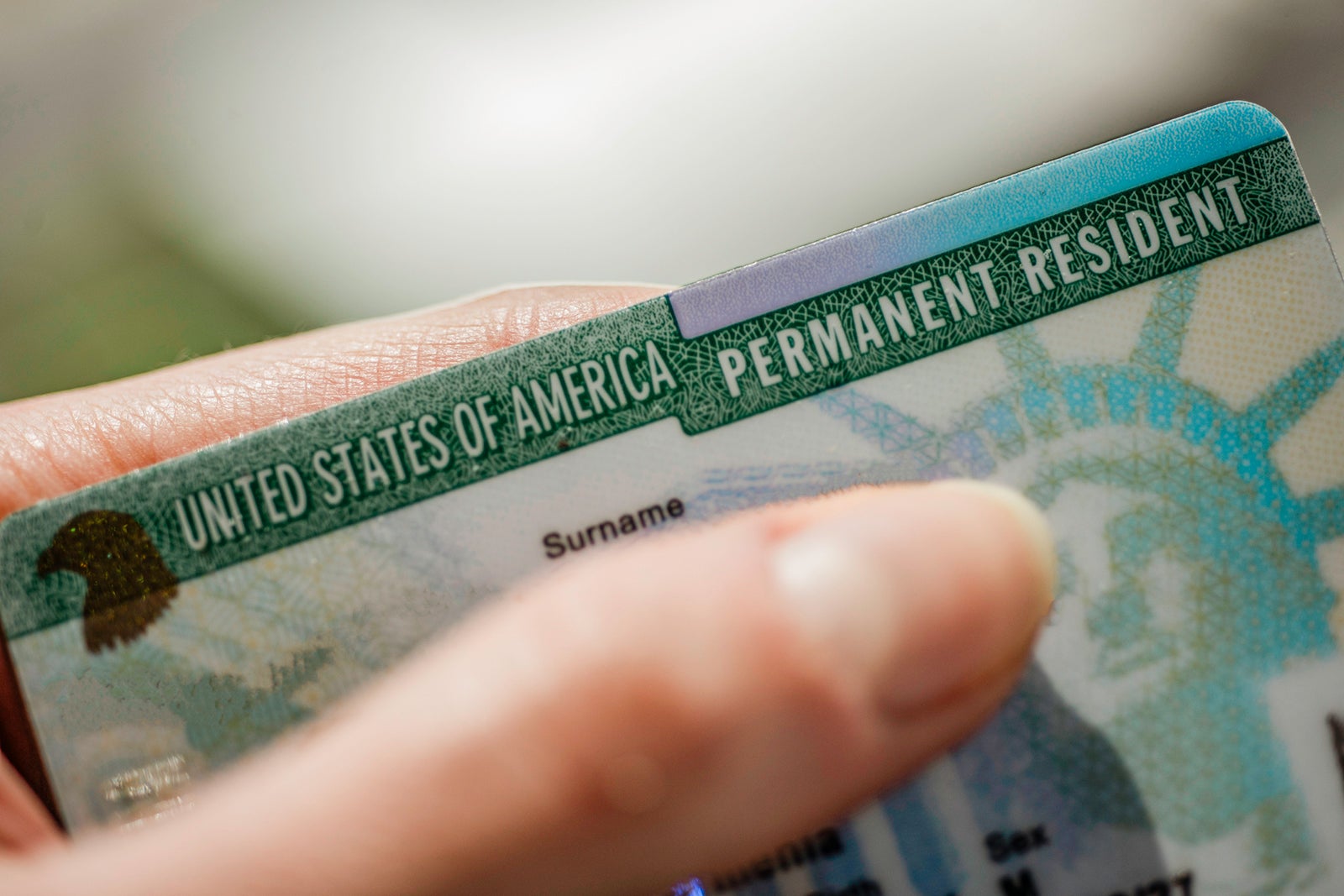
Reentering the U.S. with a green card is simple. You will need your current, unexpired permanent resident card or green card to give to the Customs and Border Protection officer. Additionally, if you have any other documents that prove your identity, such as a U.S. driver's license, a foreign national ID card or a passport, give those to the officer as well. The officer will use the documents to verify your identity and immigration status.
Does cruise travel outside the US affect permanent resident status?
If you are a permanent resident, you can travel outside the country for brief travel and it usually does not impact your status. This can change if you travel outside the U.S. for more than a year, but you're likely not cruising for that long.
Bottom line
If you're ready to book a cruise but only have your green card as a lawful permanent resident, you don't need to worry because you can set sail on the high seas without a U.S. passport. However, you often need a passport from your home country and possibly visas to enter ports of call. You will also need to prove your identity upon returning to the U.S. with your green card and a second form of identification, such as a home country passport.
A select few closed-loop, round-trip cruises sailing from a U.S. port only require you to sail with your green card and not a home country passport, but you must make sure your itinerary qualifies otherwise you can get turned away for having missing documentation. It's always safer to travel with your home country passport, even if it's not required.
Even if you don't have a green card and you only have an immigration stamp under the Visa Waiver Program, you can still take a cruise as long as it's within the 90-day admission period. For either an immigration stamp or green card, it's important to note the length of the cruise and where it goes. You don't want to get held at Customs and Border Protection upon reentering the U.S. for going outside the travel parameters of the type of citizen identification you have.
Planning a cruise? Start with these stories:
- The 5 most desirable cabin locations on any cruise ship
- A beginners guide to picking a cruise line
- The 8 worst cabin locations on any cruise ship
- The ultimate guide to what to pack for a cruise
- A quick guide to the most popular cruise lines
- 21 tips and tricks that will make your cruise go smoothly
- Top ways cruisers waste money
- The ultimate guide to choosing a cruise ship cabin

An official website of the United States government
Here’s how you know

Official websites use .gov A .gov website belongs to an official government organization in the United States.
Secure .gov websites use HTTPS A lock ( Lock A locked padlock ) or https:// means you’ve safely connected to the .gov website. Share sensitive information only on official, secure websites.

- For U.S. Citizens/Lawful Permanent Residents
- Know Before You Go
Before Your Trip
Booking your tickets.
Match Names on Tickets and Documents
Purchase your travel tickets in the exact same name that appears on your passport or official ID. Ensure that all travel documents match that name precisely.
If the names don't match, your travel carrier or the Transportation Security Administration may require additional documents to verify your identity before allowing you to board.
Each Country is Different
Learn the required travel documents for each country you will visit. Find out about specific travel warnings, U.S. import restrictions, and other rules that apply to the countries on your itinerary by visiting www.state.gov/travelers .
Find the latest on making your return to the United States problem free - go to www.cbp.gov/travel .
Documents You Will Need
Carry - do not pack - all travel documents.
- All U.S. citizens need U.S. passport books if re-entering by air. Land and sea border crossings accept additional travel documents, such as U.S. Passport cards and Trusted Traveler cards. Child travelers have additional options - see the Traveling with Children section.
- Green card (Form I-551), or document for lawful permanent residents, or advance parole (Form I-512) if your Form I-551 is pending.
- A visa or other entry document for the countries you will visit.
- Receipts or registration ( CBP Form 4457 ) for new electronics, such as a camera or laptop, that you are taking abroad. (Only suggested if the goods are less than six months old.)
- Proof of rabies vaccination for dogs traveling abroad. Check the requirements for other pets at www.aphis.usda.gov .
- Valid license for driving overseas and for use as a second form of photo ID.
- Permits and/or certificates if bringing restricted animal or plant products - go to www.aphis.usda.gov .
- Medications in their original packages. Bring only the amount of medication you will need. Prescription medications have to be under the traveler's name.
- Envelope to hold the receipts of your purchases abroad.
Traveling with Children
When U.S. citizen children under the age of 16 arrive by land or sea from Canada or Mexico they may present an original or copy of their birth certificate, a Consular Report of Birth Abroad, or a Naturalization Certificate.
Groups of Children: U.S. citizen children under the age of 19 arriving by land or sea from Canada or Mexico and traveling with a school group, religious group, social or cultural organization or sports team, may present an original or copy of their birth certificate, a Consular Report of Birth Abroad, or a Naturalization Certificate. The group should have a letter on organizational letterhead with:
- The name of the group and supervising adult(s).
- The names of the children on the trip and their primary address, phone number, date and place of birth, and name of at least one parent or legal guardian for each child.
- A written and signed statement of the supervising adult certifying that he or she has parental or legal guardian consent for each child.
Can you get a US Passport with a Green Card?
If you have a US green card, you have the right to live and work permanently in the US. In fact, you enjoy many of the benefits of living in the US and you enjoy all the rights and privileges of being a US immigrant . However, there are some rights that are reserved for only US citizens. These include the right to run for all public offices, the right to vote, and the right to have a US passport.
If you are a green card holder, you may not apply for a US passport. A passport issued by the US identifies you as a US citizen, either by naturalization or by birth. Instead, if you are a permanent resident, you will need to have a passport from your birth country or country of origin. If you have an old passport from your home country, you can visit a consulate or embassy in the US to be issued a new passport. You will need to follow the regulations of your home country for applying for a passport. When you leave the US, you will use that passport and your US green card to leave the US and to re-enter the US.
In a few rare cases, you may not have a passport from your country of origin and you may not be able to secure such a passport. For example, some asylum seekers and refugees cannot get a passport from their home country. If this is the case for you, you will need to speak to the USCIS or a travel agency about securing a travel passport or travel documents that will allow you to leave the country and re-enter the US.
Another option is to seek US citizenship . If you have been a green card holder for at least five years, have maintained continuous residence and meet the other requirements for US citizenship, you may be able to secure US citizenship through naturalization. Once you are a naturalized citizen, you will be able to apply for and receive a US passport. Being a US citizen and traveling with a US passport has many advantages that you may not be able to secure with a green card. For example, you can travel the world as a US citizen and seek help from any US embassy or consulate abroad if you need assistance. As a US citizen, it will also be even easier for you to leave and re-enter the US. In addition, you will be able to vote in elections and run for office, so you will enjoy many benefits beyond just having a passport.
Before you continue, please understand that:
- This website is run by a private company. We have no connection to U.S. Citizenship and Immigration Services (USCIS) or any other government agency.
- YOU must send your completed government forms directly to the USCIS or other government agency. We don’t do that for you.
- YOU must pay any required fees directly to the USCIS or other government agency. We don’t do that for you.
Official websites use .gov A .gov website belongs to an official government organization in the United States.
Secure .gov websites use HTTPS A lock ( A locked padlock ) or https:// means you've safely connected to the .gov website. Share sensitive information only on official, secure websites.
- Create Account
Having a Green Card (officially known as a Permanent Resident Card (PDF, 1.69 MB) allows you to live and work permanently in the United States. The steps you must take to apply for a Green Card will vary depending on your individual situation.

Green Card Eligibility Categories

Green Card Process and Procedures

How to Apply for a Green Card

While Your Green Card Application is Pending with USCIS

Replace Your Green Card

Adjustment of Status Guidance

IMAGES
VIDEO
COMMENTS
Obtaining a reentry permit prior to leaving the United States allows a permanent or conditional permanent resident to apply for admission into the United States during the permit's validity without the need to obtain a returning resident visa from a U.S. Embassy or Consulate abroad. Please note that it does not guarantee entry into the United ...
Travel Documents. If you wish to return to the United States lawfully after traveling outside the United States, you generally must have a: Valid entry document, such as a Permanent Resident Card (Green Card) or nonimmigrant visa; or. Valid and unexpired travel document. The type of document you need varies depending on your immigration status ...
ALERT: Beginning July 1, 2022, we will issue a new travel authorization document to Temporary Protected Status (TPS) beneficiaries: Form I-512T, Authorization for Travel by a Noncitizen to the United States, at our discretion if we find the beneficiary merits this authorization.We will no longer issue advance parole documents as evidence of our prior authorization for a TPS beneficiary to be ...
USCIS Extends Green Card Validity Extension to 24 Months for Green Card Renewals You may show your expired green card and your receipt notice as evidence of continued status or valid passport that contains a valid USCIS ADIT Stamp or valid USCIS Form I-94 with ADIT stamp, DHS seal, and printed photo of the LPR (aka USCIS Mail Delivery Process) to return back into the United States.
As of 2024, there are about 48 visa-free countries for US green card holders. A US green card is a pathway to a US passport. While you wait for your US passport, your US green card is already making your current passport strong. Not as strong as a US passport but quite strong. You already have visa-free access to 48 additional countries.
1. Your Green Card and; 2. A passport from your country of citizenship or your refugee travel document permitting travel to the foreign country. Sometimes, countries require visas and as such, you must have this in hand as well for entry/exit purposes. When you're ready to return to the United States, you only need to present your valid green ...
A passport is one of the preferred methods of identification for domestic air travel. It can take several weeks to process a passport, but a U.S. passport for an adult is valid for ten years, so don't wait until you have travel plans to apply for one. Other acceptable forms of identification include a driver's license, state-issued ...
5 Tips to Avoid the Risks of International Green Card Travel. As a lawful permanent resident of the United States, your obligations for maintaining your immigration status are fairly simple. You need to notify USCIS within 10 days of moving and renew your green card every 10 years. International green card travel can introduce some new hazards.
Yes, you can travel abroad as a green card holder — that's one of the many benefits of being a permanent resident. However, your trip must be temporary and you cannot remain outside the United States for more than 1 year. If the Customs and Border Protection (CBP) officer believes you do not intend to continue living permanently in the ...
Travel documents for permanent and conditional permanent residents If you are outside the U.S. for less than one year. If you are a permanent or conditional permanent resident who has been away from the U.S. for less than one year, you will only need to show your Green Card upon re-entry to the U.S.
A U.S. green card is not sufficient by itself as a document for world travel, though it is enough to get you back into the United States. You will still need something with which to gain entry to other countries, most likely your passport (from your home country) and a visa, if required by the countries to which you are traveling. Some ...
Green Card through Adjustment of Status. Adjustment of Status Application (I-485) Affidavit of Support (I-864) ... Passport. Generally, you can find your travel history information inside your official passport. Simply review the passport page for date stamps from the various trips. But, in some cases, you may not have your passport or are ...
To ask about emergency processing of a travel document, call the Contact Center at 800-375-5283 (TTY 800-767-1833) or request an appointment through My Appointment. If your situation qualifies for emergency processing, we will schedule an appointment for you with a local field office. Required Documents.
As a US permanent resident (green card holder) you are allowed to travel outside of the US. To travel outside of the US you will need 3 documents: 1) your permanent resident card; 2) your passport; and 3) any visas that are required by the foreign country you are travelling to. The laws of the United States do not require a lawful permanent ...
If possible, spend at least half of the year in the U.S. Being physically present in the U.S. for at least six months per year is the best practice for green card holders. 2. Know the risks of long-term travel. Perhaps you need to care for family members in a foreign country, or you want to travel extensively for pleasure.
All green-card users should contact the embassy or consulate of the countries on the itinerary to learn about the travel documents that are required. Depending on the ports of call, you might also need a Schengen visa , which allows entry and transit through 26 countries in Europe that are part of the Schengen Agreement.
Fact-Checked. After succeeding in gaining approval for U.S. lawful permanent residence or arriving in the U.S. as immigrants, it's not uncommon for these new residents to want to take a vacation abroad, or see family. But that can require some extra steps if they haven't yet received the actual U.S. green card they'll need to show the border ...
A re-entry permit is a travel document that looks a bit like a U.S. passport. It's issued to green card holders who want to maintain U.S. residence during a lengthy trip abroad. The re-entry permit is important because while green card holders can travel freely, they must maintain continuous residence in the United States. If you travel ...
Being Sponsored for a Green Card. Most people who apply for a Green Card will need to complete at least two forms—an immigrant petition and a Green Card application (Form I-485). Someone else usually must file the petition for you (often referred to as sponsoring or petitioning for you), although you may be eligible to file for yourself in ...
Land and sea border crossings accept additional travel documents, such as U.S. Passport cards and Trusted Traveler cards. Child travelers have additional options - see the Traveling with Children section. ... Green card (Form I-551), or document for lawful permanent residents, or advance parole (Form I-512) if your Form I-551 is pending. A visa ...
If you are a green card holder, you may not apply for a US passport. A passport issued by the US identifies you as a US citizen, either by naturalization or by birth. Instead, if you are a permanent resident, you will need to have a passport from your birth country or country of origin. If you have an old passport from your home country, you ...
A Green Card is valid for readmission to the United States after a trip abroad if you do not leave for longer than 1 year. If your trip will last longer than 1 year, a reentry permit is needed. Visit Settling in the U.S. for information on many different topics about living in the United States and a welcoming guide in multiple languages for ...
Having a Green Card (officially known as a Permanent Resident. Having a Green Card (officially known as a Permanent Resident Card (PDF, 1.69 MB) allows you to live and work permanently in the United States. The steps you must take to apply for a Green Card will vary depending on your individual situation.